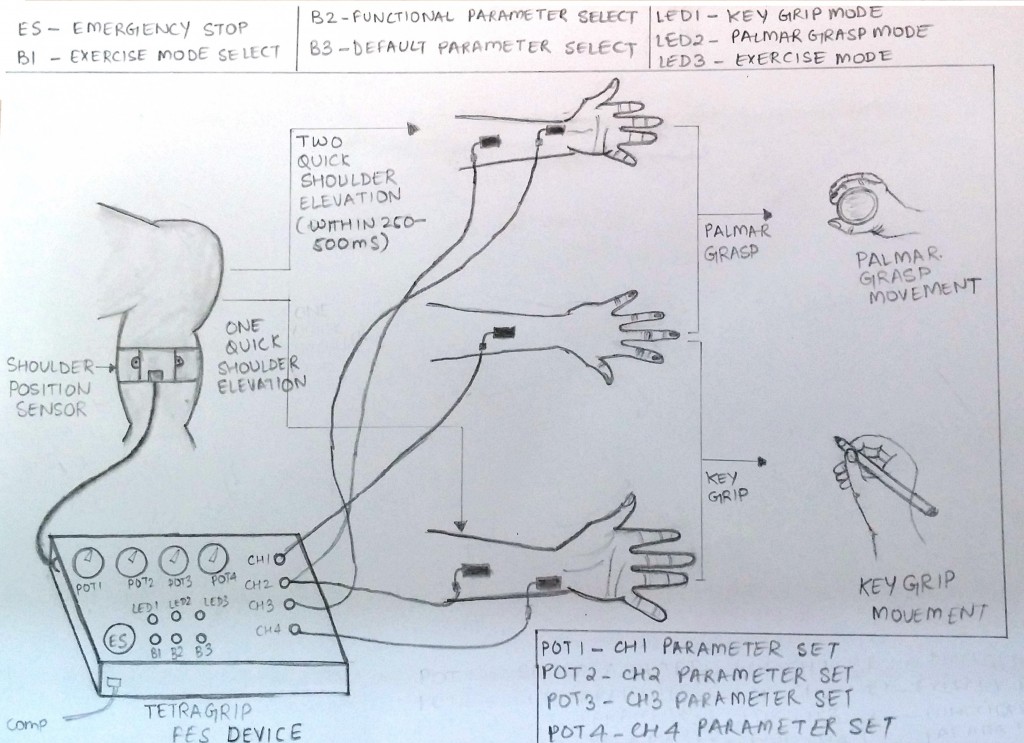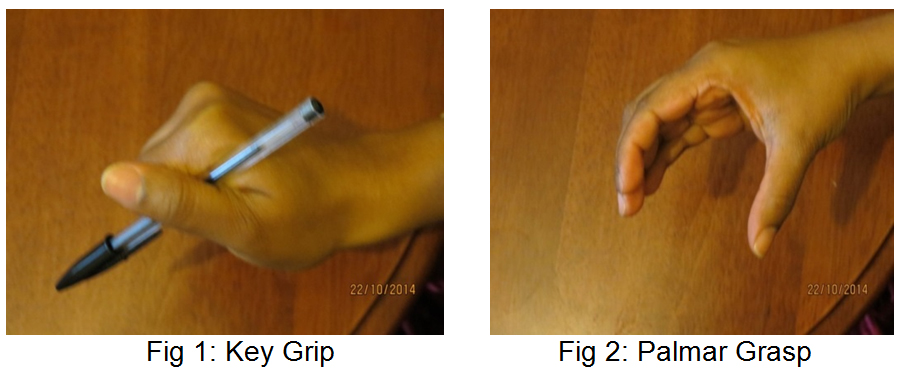We would like to invite you to the latest research seminar of the Creative Technology Research Centre.
Speaker: Lalitha Venugopalan
Lalitha is a Bournemouth University Creative Technology postgraduate student researching for a PhD in Biomedical Engineering based at the Salisbury NHS Foundation Trust.
Title: TetraGrip: A functional electrical stimulation (FES) device for restoring hand and arm functions in people with spinal cord injuries
Time: 2:00PM-3:00PM
Date: Wednesday 18th November 2015
Room: P302 LT, Poole House, Talbot Campus
Abstract:
TetraGrip is a four channel upper limb FES device for restoring the hand and arm functions on people with C5-C7 tetraplegia. This device uses an inertial measurement sensor (IMU) for detecting the shoulder elevation/depression. The signal from the IMU is used for controlling the functions of the stimulator and for adjusting the grasp strength.
The stimulator is programmed to operate in the following modes: exercise, key grip and palmar grasp. Key grip mode (fig 1) is used to grasp smaller objects like a pen or a fork, whereas the palmar grasp (fig 2) is used to grasp larger objects like a glass. The exercise mode is used to strengthen the forearm muscles.
The system will be clinically tried on ten able bodied volunteers to evaluate the repeatability and reproducibility. If the results from this study are found to be satisfactory, then the device will be clinically tried on tetraplegic volunteers for answering the following questions:
- Is possible for a person with tetraplegia to generate the desired input signal to control the operation of the device?
- Does the system improve the hand and arm functions of the user?
- Is the system easy to use for people with tetraplegia?
We hope to see you there.

 Research impact at BU: stories of older LGBT people change attitudes & the treatment of long-term conditions with electrical stimulation
Research impact at BU: stories of older LGBT people change attitudes & the treatment of long-term conditions with electrical stimulation Café Scientifique next Tuesday – Restoring our Rivers – Removing Barriers to Fish Migration
Café Scientifique next Tuesday – Restoring our Rivers – Removing Barriers to Fish Migration










 Upcoming opportunities for PGRs – collaborate externally
Upcoming opportunities for PGRs – collaborate externally BU involved in new MRF dissemination grant
BU involved in new MRF dissemination grant New COVID-19 publication
New COVID-19 publication MSCA Postdoctoral Fellowships 2024
MSCA Postdoctoral Fellowships 2024 Horizon Europe News – December 2023
Horizon Europe News – December 2023